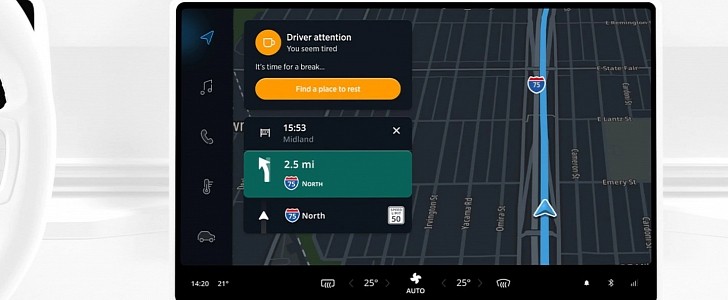Drowsy driving continues to be a major problem pretty much everywhere around the world, despite the awareness campaigns and the investments that carmakers have made into technology supposed to prevent it.
NHTSA data shows that 697 people died in 2019 from drowsy driving-related crashes, while in 2017, no less than 91,000 accidents happened because of drivers who were too tired to keep their eyes on the road. Over 50,000 people ended up suffering more or less severe injuries from these crashes.
Driver monitoring software can indeed help, and the more carmakers and their partners invest in such systems, the more advanced they get.
The living proof is an AI-based eye tracking and driver monitoring system developed by Affectiva and which works together with TomTom navigation software not only to monitor the level of drowsiness and distraction but also to take the car off the road when needed.
First and foremost, once the AI system determines the driver is tired, it alerts the notification system that delivers audible and visual warnings to reduce the chances of the person behind the wheel falling asleep. This is something that should theoretically make drivers aware they’re very tired, and naturally, most should pull over and take a break before continuing their trip.
If this doesn’t happen, the navigation system starts searching for nearby locations where the driver can stop, drink a coffee, and recharge. These locations are then automatically displayed on the screen, with a prompt to reconfigure the navigation to point to them without changing the route substantially.
The navigation integration into such a driver monitoring system also has an even more advanced side. For example, TomTom says its software can determine how long the driver has spent behind the wheel and how much time they need to reach the destination, eventually acting accordingly and proposing appropriate advice.
For example, if a driver is still far away from the destination and shows signs of fatigue, the navigation system can recommend not only stops to rest but even hotels where they can sleep. For destinations that are closer, the app can point the driver to gas stations for a quick coffee, for instance.
Driver monitoring software can indeed help, and the more carmakers and their partners invest in such systems, the more advanced they get.
The living proof is an AI-based eye tracking and driver monitoring system developed by Affectiva and which works together with TomTom navigation software not only to monitor the level of drowsiness and distraction but also to take the car off the road when needed.
First and foremost, once the AI system determines the driver is tired, it alerts the notification system that delivers audible and visual warnings to reduce the chances of the person behind the wheel falling asleep. This is something that should theoretically make drivers aware they’re very tired, and naturally, most should pull over and take a break before continuing their trip.
If this doesn’t happen, the navigation system starts searching for nearby locations where the driver can stop, drink a coffee, and recharge. These locations are then automatically displayed on the screen, with a prompt to reconfigure the navigation to point to them without changing the route substantially.
The navigation integration into such a driver monitoring system also has an even more advanced side. For example, TomTom says its software can determine how long the driver has spent behind the wheel and how much time they need to reach the destination, eventually acting accordingly and proposing appropriate advice.
For example, if a driver is still far away from the destination and shows signs of fatigue, the navigation system can recommend not only stops to rest but even hotels where they can sleep. For destinations that are closer, the app can point the driver to gas stations for a quick coffee, for instance.






